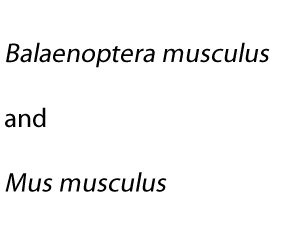
The scientific name of any organism consists of two Latinized words. The first word is the name of the genus to which the organism belongs and the second word is the specific term of the species. This is known as the binomial naming system and was introduced by Carolus Linnaeus in 1758. For example
Homo sapien is the name given to humans. Homo is the name of the genus while sapien is the specific name, Latin for wise. Together, the genus plus the specific name make up the species name which is universally understood to refer to one and only one species.
The specific part of the scientific name, or epithet, does not reflect an association with a particular taxa. However the genus is the part of the name that gives the relationship to other organisms. If you were to be given the specific epithet only it would make no sense in identifying the species.
For example Balaenoptera musculus and Mus musculus have the same specific name but they refer to completely different organisms. If you were to refer to musculus in a conversation the other person would have no way of knowing the species.
Take two more examples
Anolis carolinensis and Gastrophryne carolinensis, are scientific names, with an identical specific name. We can tell, however, that they belong to different genera.
Cnemidophorus tigris and Panthera tigris

Panthera is the genus of the big cats and Homo the genus of humans. The genus alone can be meaningful to scientists, however, as stated before, the specific name can not.
The genus is capitalized, but the specific name is not while both words are written in italics.
What are the advantages of scientific names?
1) Scientific names are universal and can not be confused.
a) Panthera tigris
b) Panthera tigris
c) Panthera Tigris
Panthera tigris, Panthera leo, Cnemidophorus tigris
4) The classification of a certain species is shown on the right.
What is the scientific name given to the species?
